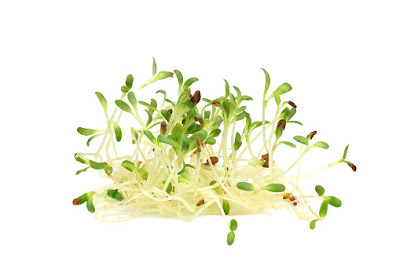Detailed information about the Humic acids for Agriculture
Plants need various nutrients like calcium, magnesium, iron, etc. These elements are in positive ions form. So there is a need for some kind of force to hold them and make them available for plants. This force can be made available in the form of humic acids.
Here you can get detailed information about Humic acids and its uses and benefits for plants and soil also.
What are Humic acids?
Humic acids are dark brown compounds that are isolated from organic matter. Humic acids are not a single product but they are the compounds made from various forms of organic material.
Humic acids are large molecules that contain many elements in it. It contains major elements like Carbon, Hydrogen and Oxygen.
It acts as a biostimulant and bio enhancer. Humic acid improves the quality of plants by indirect means. It doesn't give nutrition to plants nor it kills pathogens. It only makes nutrients available to plants.
It is made from decomposed organic matter like coal, leonardite, etc. These substances contain humic acids in them. Humic acids are mostly extracted from leonardite. These are the products of decomposition of animals and plants that got buried in the soil hundreds and thousands of years ago.
Humic acid has many benefits in farming. They increase the cation exchange capacity of the soil which helps plants to get nutrients easily. Thus plants benefit from it.
What is leonardite?
Leonardite is the soft and waxy substance that is black to brown to black in colour. It is the oxidation product of lignite. It is formed from the decomposition of many products in the past. sedimentation layers referred to as Leonardite. These layers were originally deep in the earth’s crust, but over many years have been exhumed to a near-surface location.
Humic acids are found in high concentration in these layers.
It is rich in humic acid and contains upto 90 % humic acid. It is also used as a soil conditioner.
Let's see some details about humic acids
Humic acids are not acids in real, as they do not form acidic solutions when mixed with water.
Humic acid contains negative charge on it. As it is negatively charged it attracts many positively charged molecules towards it. When it is added to the soil it forms the bind with positively charged cations like calcium, iron, magnesium, etc present in the soil. Then hold these minerals.
As the roots contain higher negative charge than the Humic acids it attracts the positively charged atoms of the minerals present in the Humic acid complex towards it.
Hence in this way plants get nutrients.
How to apply humic acids to plants and soil?
Humic acid is a very beneficial product for plants. It increases cation exchange capacity of the soil. It also improves soil structure hence has a beneficial effect on soil microflora.
Humic acids can be used to apply in soil or it can be used as foliar application.
Many gardeners and farmers use humic acid and fulvic acid for plants. The fulvic acid is nothing but the form of Humic acids.
It is lighter in colour than the Humic acid.
Many farmers use the combination of Seaweed organic fertilizer with fulvic acid and humic acids according to the need of soil and plants.
Foliar application
For foliar application if you are using powdered product, then you have to dilute it before applying to plant leaves.
Diluting is very important to make the solution of desired concentration.
Take about one tablespoon of powdered humic acid and mix it to 3.4 to 4 litres of water.
Spray this mixture on both the upper and lower sides.
Humic acids increase the nutrient uptake by increasing the cell wall permeability. It is often done by fulvic acid that is mixed with humic acids.
Liquid humic acid :-
It is the concentrate product so it is necessary to dilute it for application to leave.
Mix 20 ml of the liquid humic acid to 1 litre of water. Then put it in a spraying can and then spray it on the leaves. It can be used with fulvic acid to spray on leaves.
Make sure not to spray too much on the leaves. This will bring some undesirable consequences if sprayed in too much concentration.
Soil application
For soil application you can use powdered humic acid to broadcast directly. You can incorporate it in top 1 to 2 inches this will give you best results.
You can make the solution of 2 tablespoon powdered humic acid and mix it with 4 to 5 litres of water. This solution can cover about 1000 sq.ft of land area.
If you have concentrated liquid then you can mix 100 ml per litre of water and then apply it to soil as above.
Apply it when the soil is somewhat moist. This will give you the best results. You can apply it to soil after 5 to 6 six weeks during the growth period.
The required doses of the humic acid can be different from soil to soil and from plant to plant.
Expert's advice in your locality is must to get good results.
Benefits of Humic acids
1)Increases nutrient uptake by plants:-
Humic acids increase the nutrient uptake capacity of the plants. They can absorb more nutrients as compared to ordinary fertilizer.
Humic acids increase the nutrient uptake in both ways i,e by soil application and by foliar application.
Benefits from soil application:- Humic acids contain negative charge on it. The soil nutrients in minerals contain positive charge on it . So the humic acids attract the mineral ions towards it and then form a complex. Thus it helps to hold nutrients.
The root system also contains negative charge on it. This negative charge is more than that of the Humic acids so the mineral ions that are attached to Humic acids are now attracted towards roots. Thus roots are able to absorb nutrients faster as the work of collecting the mineral ions is done by humic acids.
Benefits from foliar application
Humic acids are useful in foliar application used with fulvic acid. It increases the permeability of the cells. Thus increasing the permeability of the cells helps to increase the uptake of the nutrients by cells.
2) Increases Cation exchange capacity of soil
Adding humic acids to the soil increases the cation exchange capacity. As it helps to hold nutrients. Humic acids are negative in charge so they help to hold positively charged ions of the elements like calcium, magnesium, iron, Phosphorus and many more.
Humic acid reduces the leaching of these nutrients from the soil. This is why soil with high humic acids are rich in nutrients. Plant grows luxuriantly in those soils.
Preventing the leaching of nutrients saves money on the nutrients application.
Humic acid makes the nutrients in readily available form to plants. It increases the phosphorus uptake of the plants upto 40%. As phosphorus is associated with other elements, plants get other elements also.
3) Soil buffer
Humic acids act as the soil buffer.
It can increase the pH of the acidic soil by absorbing the hydrogen ions from it.
It can reduce the pH of the alkaline soils by releasing the hydrogen ions in it.
Thus it helps to maintain the right pH balance of the soil, helping in plant growth.
4)Biological benefits
Humic acid makes the good growth of soil microorganisms. This is very useful for the plants as plants get many nutrients from them.
It also increases the enzymatic activity of the plants. It is found that the Humic acid application increases the urease enzyme in the plants. Thus helps plant in better performance in some vital processes like cell division, respiration, metabolism, etc.
The overall benefit is that it boosts the growth and reproduction of the plants and of useful soil microorganisms. Thus increasing the yield.
5) Soil conditioner
Humic acid acts as the soil conditioner. As it helps to bind soil particles together it helps in creating the pore space in the soil.
Increasing the pore space in the helps in good aeration of the soil. It also increases the water holding capacity of the soil.
Humic acids get in between the soil particles this increases the heaviness of the clay soil. Thus makes it favourable for root growth.
When we add humic acid to sandy soil. It helps to increase the water holding capacity by forming the good porous structure.
Thus it helps in good root growth of the plants by promoting the good soil conditions both in heavy and light soils.
6)Reduces Toxicity
The application of fertilizer doses in excess leads to increasing the soil toxicity level. Many of the harmful chemicals are now getting accumulated in the soil. These chemicals are the big problem for the soil microorganisms and the plants.
When you use humic acids to the soil it locks the harmful elements in it. As the plants do not require these elements they are left as such in the soil.
Thus help in preventing the plants from getting toxic effects of these chemicals.
7) Soil Structure
Humic acids increase the overall structure of the soil. It increases the pore space that helps in both heavy and light soils.
It maintains the pH of both acidic and basic soil thus enhancing good plant growth.
It reduces the toxicity level of the soil. Thus it favours good growth of soil microorganisms.
Thus it is the full boosted soil amendment that gives you overall benefit from its application.
Price of Humic acids
When you are buying the Humic acids you have to buy it from the certified seller.
Assured the quality before buying.
You can get the granular powder of Humic acid at the rate of approx.
60 to 100₹ per kg
The liquid form is quite more expensive than the powder form as it is the concentrated product.
You can get 1 litre of the liquid humic acid for about 400-600₹.
Conclusion
Thus all above it he uses and benefits of using Humic acids for your soil.
These are the organic products that are extracted from decomposed organic matter log years ago.
You can use humic and fulvic acid as a soil amendment and it can help in good plant growth and improve soil conditions.
If you find the article useful please share it with your friends.
Please comment if you have any queries.
Thank you.












